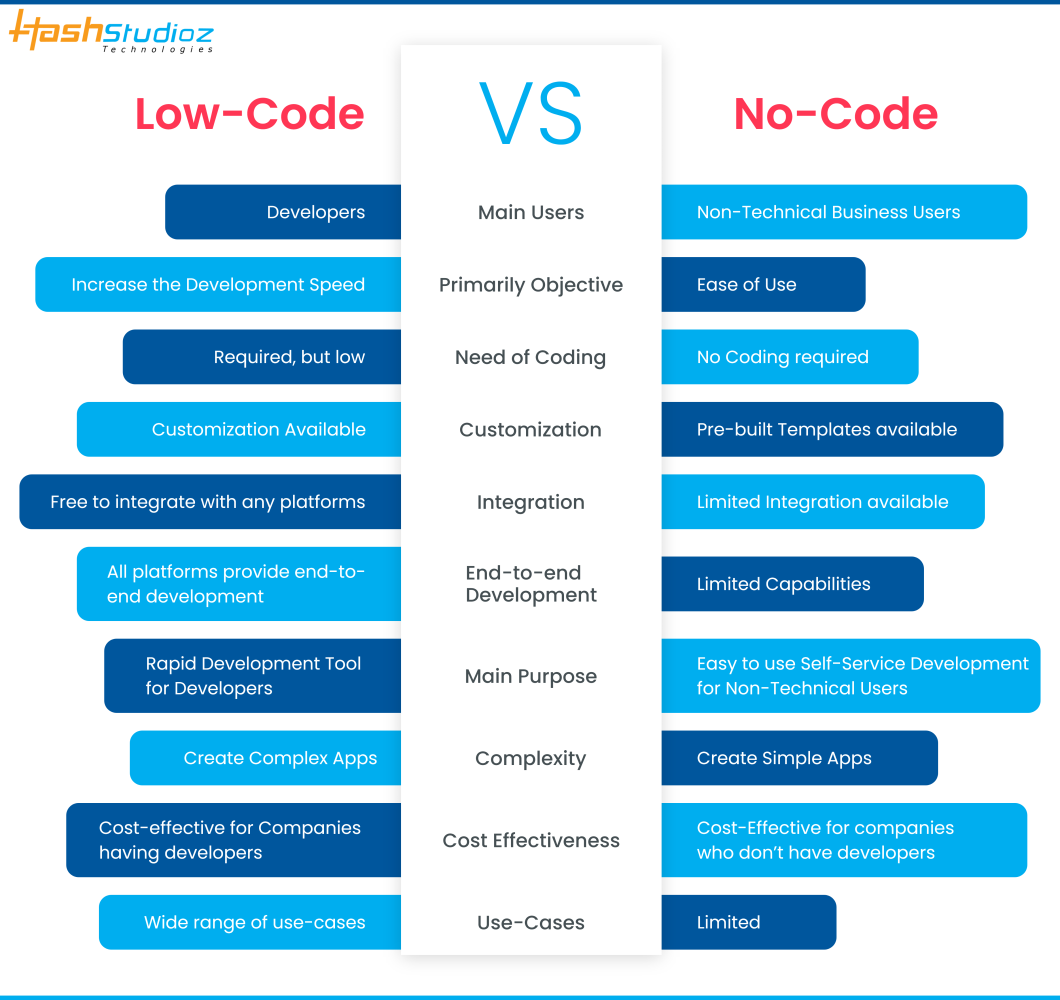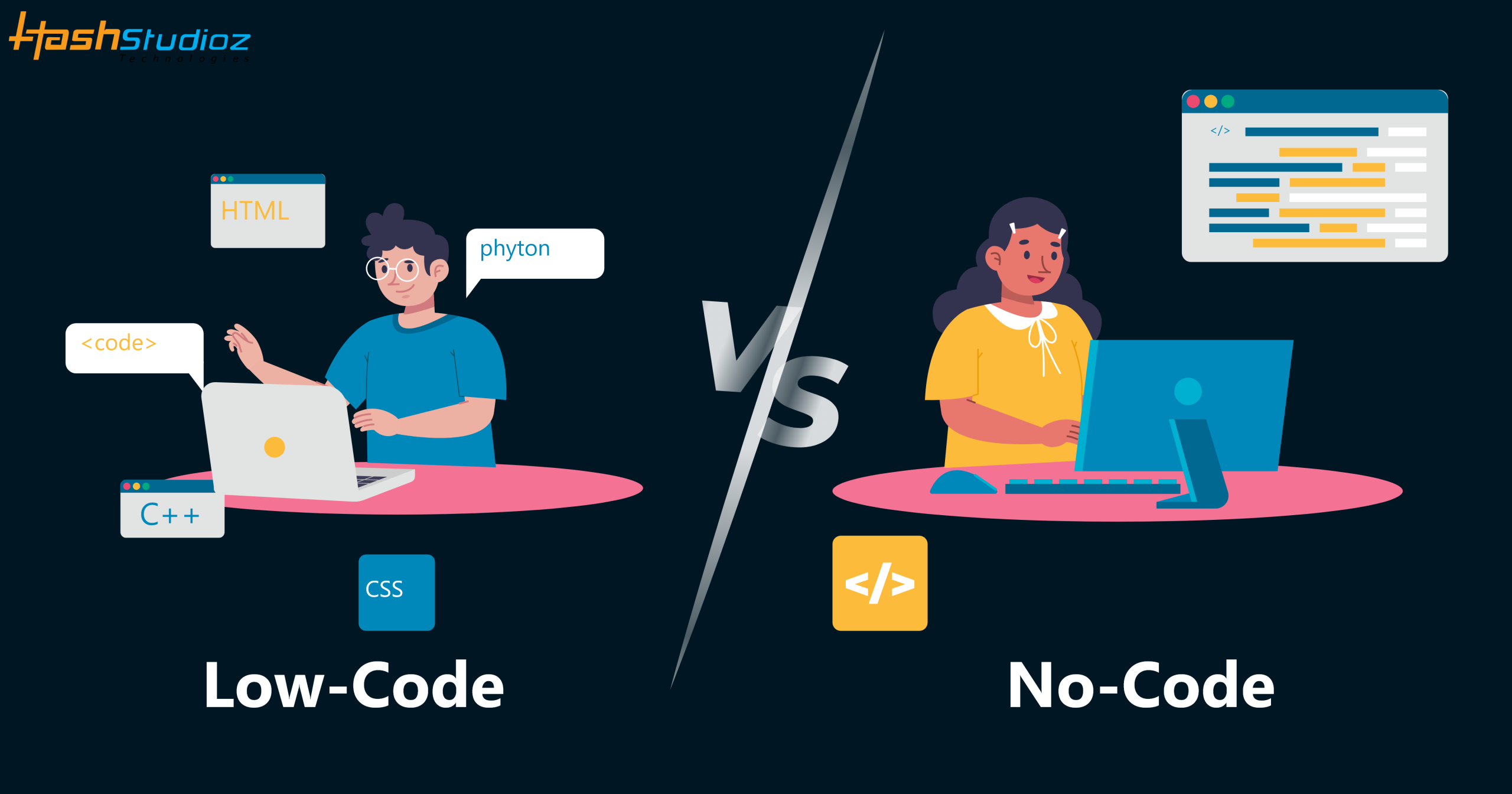There was a time when the idea of building a digital medium was a tough battle for non-technical founders and entrepreneurs. It required lots of skills, taking care of developer interviews, creating tech specs, and, of course, having the funds to pay for it all. Back then, the idea of starting a website, mobile application or any digital platform as a solo entrepreneur meant you have one of three things: a lot of technical knowledge, having a lot of time, and having a lot of money. This will create a high barrier for some of the best ideas for products that were never given a chance to shine.
But Today, that’s all changed.
At first glance, it’s easy to confuse between low-code and no-code development. Even the big organizations seem to have a hard time differentiating between them. There are factually hundreds of small details and functions that differentiate low-code from no-code. In this article we address the differences that set the two apart from each other so that you can better understand which one to choose.
So, buckle up, because here’s everything you need to know.
Table of Contents
The differences between Low-Code and No-Code
While both no-code and low-code development are similar in terms of output (ideally a fully operational piece of software), they do have several differences. The following are some of the basic features that can help you to understand the differences between low code and no code development:
Target audience
One of the major differences between low-code and no-code is the target audience. Primary servers of Low-code Development are developers. Low-Code Development requires some short technical knowledge, and it helps good developers to work faster. In simple terms, Low-code is usually targeted towards the users having technical background, or even software developers who want to skip the more mundane aspects of the development process. The more powerful the low-code development tools to speed up technical development, the better suited it is for software developers. Low-code Development still requires some coding, because they are aimed at being able to create a very wide array of software solutions. So, the main target audience of low-code development is Users with some short of Technical Knowledge to build software for several purposes.
No-code development is designed for non-technical users, making it more user-friendly at a high level. It doesn’t allow manual code editing but focuses on providing an easy and intuitive user experience, abstracting away technical details. In simple terms, No-code development is typically advertised to non-developers, not to IT or expert developers. Because no-code development tries to avoid making users code, customization options are limited.
Training Requirement
The other major difference between No-Code and Low-Code is Requirement of Training. Low-Code platforms contain more complex tools and it also provides customization. Hence it is best suited for the users having some programming knowledge. Hence, there is a requirement of training for employees when it comes to low-code.
However, because No-Code Platform doesn’t require any technical knowledge and experience to develop a website or application. So, there’s no room for training employees.
Open Vs Closed Ecosystem
The other big difference between low-code and no-code development platforms is their ecosystem. Low-Code Development Platforms, allows its users to change or add code, which affects the functionality of the application. The main advantage is that this opens up the system to add custom code as per the requirement and makes it applicable to more use-cases. But the big downside however, is that this limits backwards-compatibility. This means that, if there is any upgrade of the platform, all customers must spend time testing whether their software still works or not. If there are any problems, you have to change the custom code before so you can upgrade to the new version of the platform.
Architectural range
Low-code has a high hand over no-code in its support for scalability and cross-platform compatibility. Users can add custom plugins and custom code in the low-code platform which opens up the possibility of a wider range of implementations and working with multiple development platforms.
On the other hand, No-code Development Platforms have less extensibility and limited capabilities in connecting to widely used systems or integrating with other platforms. Therefore, it has minimal use cases and has a reduced ability to scale.

Why is there a need for low-code and no-code?
After the pandemic, the need for the latest software technologies has skyrocketed. Companies with low budgets and not having Advanced IT Developers are adopting Low-Code and No-Code Development. According to the IDC Research Report, 500 million digital services and applications will be developed by the end of 2023. This matches the total number created in the previous 40 years. Unfortunately, the number of programmers who can develop those applications has not increased.
According to the US Bureau of Labor Statistics, in 2020, there were 1.4 million computer programming jobs but only 400,000 computer graduates. Since hiring alone won’t solve this issue, IT teams seek more efficient ways to rapidly develop strong applications. Low-Code and No-Code Development Platforms have the potential to find a way out. Low-code and no-code platforms let developers build applications quickly. They offer features like visual design tools and drag-and-drop interfaces. Instead of writing hundreds of lines of code, you can simply drag and drop to create internal apps.
Why choose HashStudioz for low-code/no-code development?
Low-code and no-code development platforms have a potential to reshape the upcoming development industry. In the near future, these platforms will lead the industry. Ignoring their advantages may result in missed opportunities for organizations.
Hashstudioz offers a Low-Code development platform that has made it easy for business users to develop software solutions rapidly. With our low-code development platform, your teams can create custom applications quickly. It includes built-in features that streamline processes, boosting productivity and efficiency for your business.
On the other hand, HashStudioz also offers the No-code Development Platform that has made it popular among enterprises having a backlogged IT Team. It allows business users to create their own application or Software without having to rely on IT or consultants.

